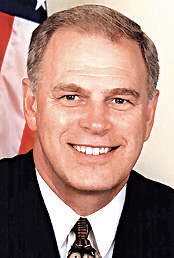State could lose representatives

Ohio Governor Ted Strickland (D-Lisbon)
By Marc Kovac
The governor stressed that every Ohio resident must be counted in the census.
COLUMBUS — Ohio likely will lose one of its congressional seats — and perhaps two — after next year’s census, Gov. Ted Strickland said.
The governor pointed to that fact in emphasizing the importance of the decennial population count, after signing an executive order establishing a committee to ensure residents’ participation.
“It is, I believe, a certainty that we will lose at least one congressional seat following this next census,” Strickland said Thursday. “And we are in great danger of losing two congressional seats. That would diminish Ohio’s representation in Congress for the next 10 years, so it is hugely important that every person who is a resident of our state is reached and counted.”
The U.S. Census occurs every 10 years and provides residency statistics used to determine federal funding and congressional representation for each of the 50 states.
State agencies, including the Ohio Department of Job and Family Services, the Department of Education and the Board of Regents, receive billions in funding annually based on census results.
Ohio hasn’t necessarily lost residents over the past decade; rather, Strickland said, the state is growing as quickly as others in the South or Southwestern parts of the country. That means those states will gain congressional seats, while Ohio, Michigan, Pennsylvania and others will lose some.
“It certainly would have a serious and meaningful impact on the resources coming to our state,” Strickland said.
The executive order signed by the governor Thursday created the Ohio Complete County Committee for the 2010 Census, to be headed by state Treasurer Kevin Boyce, a Democrat who formerly served on Columbus City Council.
The group will work with county commissioners, mayors and other local officials to determine the best means of contacting residents.
“Knowing that every penny is important in this economic time and beyond, our role is to ensure that everyone’s counted so that every Ohioan receives the dollars that are rightfully due to them and to our communities,” Boyce said.
The actual census process isn’t complicated. Residents will be asked to complete a short survey, taking 10 minutes or less, Strickland said. Questionnaires will be delivered to residents in early 2010. Census workers will attempt in-person visits with households that do not respond.
All residents are counted, including those who are homeless and, potentially, undocumented workers. And census workers are bound by oath not to disclose the private information they gather, so the latter will not face prosecution for participating, Strickland said.
“Even individuals here who are not citizens are in many ways receiving services which are costly to the state,” he said. “And, so, I think it’s hugely appropriate that we try to reach every person within the borders of our state.”
mkovac@dixcom.com
 43
43
